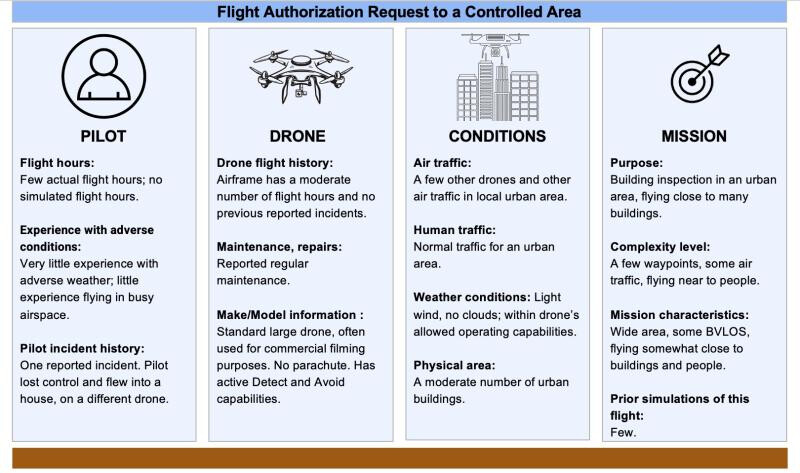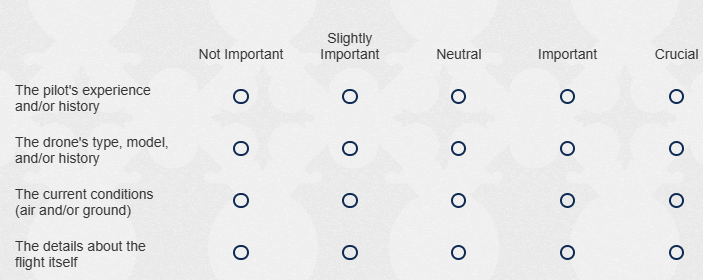Friends! It would be very helpful if you could take our survey about drones and restricted airspaces (or send it on to those you know who might be interested)? The survey should take about 15 minutes to take and we’re really hoping for a few more people to take it. My work is through Iowa State University, working with a team from Notre Dame and other teams around the country. If you could spare a few minutes, I would greatly appreciate it! Or send the link on to friends! Thanks.
If you are actually funded by NASA and this is sanctioned by Notre Dame, both should be embarrassed. This has nothing to do with restricted airspace (and never actually defines the actual airspace to be used), and the “requests” are in such a strange format that it’s hard to discern the actual objective. I quit after two questions because it’s ill conceived and poorly written.
I sincerely hope the collected data is not going to be presented to an actual policy-maker, as it’s clear that whoever wrote it has little to no practical aviation (or UAS) experience and has no business driving actual industry or regulatory change.
I’m sorry that you felt that way. I will pass on your comments to our team. For what it is worth, this is an exploratory survey, very early in our process, to help guide future work. If you have other comments on this, I will be happy to pass those on as well.
Ok, here’s an example question setup:
And the only factors considered for approval:
What actual airspace type is to be used? At what altitude?
Perhaps most importantly, why is that airspace otherwise closed to drone operations? Why is a special request needed for this mission?
Pilot experience is irrelevant to an extent - I want to know what his/her qualifications are. Is it expected that an approving official will review the resume and flight history of both the pilot and the aircraft? That’s a silly assumption. The pilot is either qualified/certified in the operations to be performed or not. Same goes for the airframe.
What are the actual hazards? “A few drones and other air traffic” gives exactly zero information upon which to make a decision. Same goes for “Human traffic: Normal.” What mitigations exist to avoid these hazards? You seem only to hint at sense and avoid technology, but traffic conflicts can be avoided laterally, via altitude separation, and by time/scheduling. Similar with ground hazards. The existence of a risk isn’t enough information upon which to make a decision - it’s the mitigation that is key.
Actual weather conditions are immaterial in such a request (as they are impossible to forecast accurately on a timeline for which a waiver might be granted). An approval to such a request would likely state minimum acceptable conditions.
Frame your questions and data around actual information relevant to existing situations and regulations rather than posing vague, oddly worded scenarios to your respondents.
I get the feeling that you are operating in a lab with mostly engineering-types that have little to no oversight or input from actual operators/pilots who are familiar with this kind of work. Consult with experts. Make no assumptions.
Thanks for the detailed response! If it is OK, I will add your comments to our other list of comments, which might make it into our paper. I will head back to the lab with my fellow engineering-types now.
Quite welcome - I appreciate that you actually solicited feedback. For what it’s worth, I’m not intentionally disparaging engineers. I work a great deal with engineers and respect the expertise they have in their fields. I do think that the aviation industry at large suffers from a rather ill-conceived development paradigm where engineers are forced to work in a bit of a vacuum, and operator expertise is ignored (or worse, assumptions made on their behalf) until it’s too late to make a course correction for the positive.

